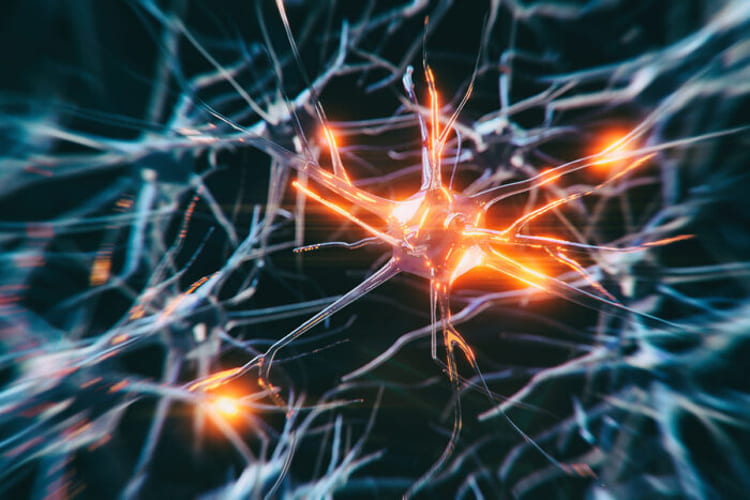People with neurofibromatosis type 1 (NF1) develop tumors on nerves throughout their bodies. These tumors are usually benign — meaning they don’t spread to other parts of the body and are not considered life-threatening — but they can still cause serious medical problems such as blindness, especially when they form in the brain and nerves.
Researchers at Washington University School of Medicine in St. Louis have discovered that neurons carrying a mutation in the Nf1 gene are hyperexcitable and that suppressing this hyperactivity with lamotrigine, a drug approved by the Food and Drug Administration to treat epilepsy, stops tumor growth in mice.
“Tumors are very common in people with NF1,” said senior author David H. Gutmann, MD, PhD, the Donald O. Schnuck Family Professor and director of the Washington University Neurofibromatosis (NF) Center. “We’ve shown that we can block the growth of NF1 tumors by shutting off neuronal hyperexcitability. We’ve done it now a couple of different ways, and there’s no question that repurposing antiepileptics is an effective way to inhibit tumor growth, at least in mice. This underscores the critical role that neurons play in tumor biology.”
The study is published May 19 in Nature Communications.
NF1 is a genetic disorder that affects one in every 3,000 people worldwide. The condition is caused by mutations in the NF1 gene. Any part of the body can be affected, but the most common signs of the disorder are light brown spots on the skin, benign nerve tumors called neurofibromas, tumors of the brain and optic nerves, bone deformities, and cognitive differences such as autism, learning disabilities and attention deficit hyperactivity disorder.
Last year, Gutmann and Michelle Monje, MD, PhD, a professor of neurology at Stanford University School of Medicine and a Howard Hughes investigator, showed that light induces increased neuronal activity in the eyes of Nf1-mutant mice, which then causes tumors to form on the optic nerve that connects the eyes and the brain. In the new study, they — along with first author Corina Anastasaki, PhD, an assistant professor of neurology at Washington University, and co-author Lu Q. Le, MD, PhD, a professor of dermatology at the University of Texas, Southwestern Medical Center — investigated how increased neuronal activity leads to tumors in people with NF1.
